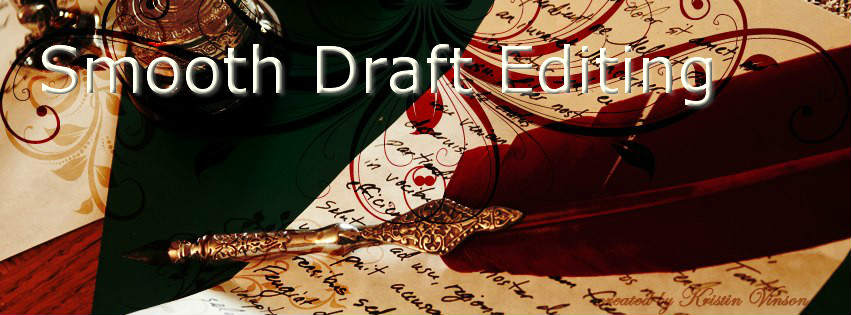Writing Tip — Point of View and Description
As an editor, one of the issues I find myself correcting on a regular basis is point of view or POV. You probably already know that you need to remain in one character’s POV for the whole scene or chapter, and that it’s easy to stray from that POV, particularly with description
So how do you show what your main character looks like when you’re in his POV? You can’t really just have Jane going on about her emerald-green eyes unless you want her to sound incredibly vain or self-centered. There are a few tricks to incorporating descriptions seamlessly and elegantly, and it depends on your goal.
Why are you giving us the description in the first place? Two main reasons are so the reader has an idea of the character’s features, and for characterization. Think carefully about what you want to achieve. Let’s look at a couple of examples.
1. Character description. If you want us to know about Jane’s sparkling eyes and the cute little mole on her chin, as well as that she’s wearing faded blue jeans and a red top that clashes with her red hair, it might be a little tricky to get all of that in sentence. In fact, I highly advise against it, especially if you are in Jane’s POV.
You can ease the information in by having her get dressed, or thinking back to her glad she’s wearing her favorite jeans, even if they aren’t as dressy as she might want to be for the occasion. Perhaps she’s meeting a friend for lunch. The friend can comment, “Wow that shirt doesn’t work with your red hair. What were you thinking?”
Consider why you need the description. Does it have to be in Jane’s POV? You can do a lot of characterization by having the other character notice Jane’s appearance.Let’s call our hero Randy and he’s Jane’s love interest.
2. Characterization
This falls into two categories: Jane’s characterization, which will be about how she feels about her own appearance, and building the character of Randy, through how he sees and reacts to Jane.
If Randy thinks Jane’s jeans look great on her, he can certainly notice them. In his POV you can get his internal thought process about Jane’s appearance. Maybe she’s too hot for a plain guy like him to approach. Now you’ve not only added a layer to Randy’s personality, but you’ve also given us a clue of what he looks like.
In Jane’s POV, she can respond to her blunt friend’s comment on her choice of shirt, or she could react to something Randy says about her appearance. All without Jane having to mention her own looks in a way that comes across to a reader as unnatural.
“I think this shirt looks just fine, and don’t you think it brings out the green in my eyes?”
or
“My mother used to tell me redheads shouldn’t wear red, but it works with my eyes, just the perfect color for green eyes.”
Both of those examples show Jane with a neutral view of her looks. Had she mentioned how her eyes sparkled or something too complimentary about herself, it comes across badly, unless of course that’s how you want us to see your character.
You’ll notice that adding dialog and another character’s opinion is showing jow Jane looks, rather than just having Jane or someone else tell us. Much more powerful.
If that’s all a bit too hard to fit into your scene, you can take a shortcut with the character spotting herself in a mirror and fixing her hair or noticing a feature and frowning.
Jane tucked some hair behind one one ear. Randy loved the color, but she found it so difficult to choose outfits that didn’t clash with the bright orange-red, nicknaming her “Lucy,” after Lucille Ball. She’d even considered dyeing a drab brown so she could wear the vibrant red clothes she loved so much.
That’s pretty close to the line, at least for me, but we get both some description as well as some characterization of both Jane and Randy.
Got another tricky description issue or a POV question? Leave a comment.

Hi YM! In some ways first person is easy since you are always using “I” so you should be able to know exactly what that character sees and knows. But as an author you know far more. You must watch that you only write what the POV character sees, knows and thinks, even if the author part of your brain knows more. Go back and read it out loud and every time you get to a description, you must ask yourself if you would really say that or notice that thing if you are that POV character. Sure, you know what color your own hair is, but the average person never really acknowledges it in their thoughts. Does that help?
Yes, you’re abosolutely right, I’m also gonna try reading it out loud, didn’t even think about it. Thank you so much. I’ve become quite addicted to your site. 😉
I’m so glad you like the site! Thank you.
Reading out loud is essential for new writers to understand how to write dialog. It might look fine on the page on in your head, but once you start reading it out loud you’ll find the places where it sounds unnatural. Good luck with your writing!
What about 1st person POV? I’ve heard is one of the most difficult ones, staying in charachter, are there any tips?